Looking back at China through the same angles with Dheera Venkatraman
When most people travel, they think of geography. When Dheera Venkatraman travels, he thinks about time. Besides working as an electrical and software engineer, Venkatraman is also an enthusiastic photographer who considers himself an avid traveler and world citizen. In his recent visit to China in January, he reshot older photos from China, matching the same angle and focal length as they appear in the originals. By juxtaposing old and new photos people can see how urbanization has swept through cities in China over the past hundred years. The photographer (DV) spoke with Global Times (GT) about his "time travel." Jing'an Temple in Shanghai in 1959 and 2016 Dheera Venkatraman Xihu Lake in Hangzhou, Zhejiang Province Lanzhou, capital of Gansu Province
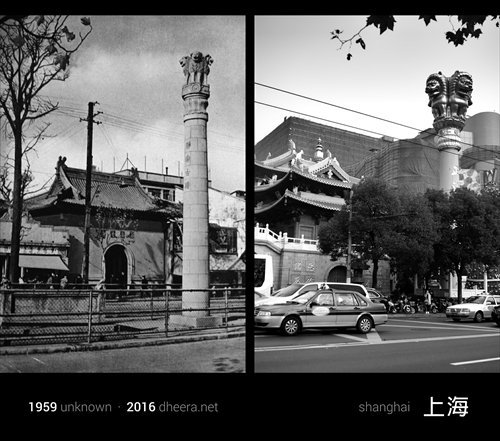
GT: How did this idea come about?
DV: When most people travel, they think of travelling to a destination. Whether it's climbing Mt. Fuji, gawking at the frescoes in the Vatican, or relishing spicy cuisine in Thailand, most people think of the destination for what it has to offer, from culture to scenery to sensational experiences.
As a photography and creativity enthusiast, I like to do what others don't do, so that I have something new to share with the world when I come back, instead of taking the same set of pictures everyone else does. And having studied physics before, I thought about travelling in "time" instead of "space" this time.
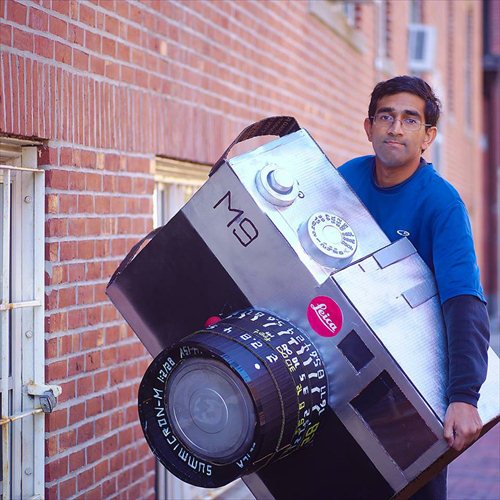
GT: What do you want to express through the photos?
DV: To be honest I leave this open to the interpretation of the viewer. I deliberately didn't say much about what message I wanted to convey, because I think it conveys different things to different people.
To a local who has been around for decades and seen the old side of some of these photos, it might bring memories of those times; they may be happy or sad memories, depending on the times. To a young cosmopolitan person, they might view these photos with curiosity and awe about what things really looked like before. To a futurist, it might invoke thoughts about what changes are yet to come in the next 30 to 40 years. There are many thoughts that can be taken away from these - positive, neutral, negative alike - and I'd like to leave that up to the reader to interpret.
GT: What is the biggest challenge for you to reshoot the old photos? Did you receive any help from locals?
DV: The biggest challenge is identifying and getting to the exact right angle. While it's often easy to identify what a particular photo is of, it's not always easy to get to the exact same location because we live in a built-up urban environment, and going left or right just 100 meters may involve getting around a few buildings and streets.
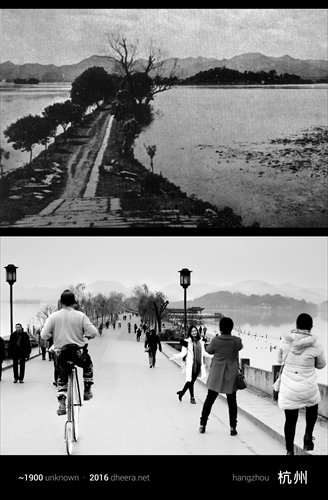
GT: Did you have any problems or failures trying to recreate these images?
DV: In many cases, the location where the old photo is taken is now private property, so it is not always possible to get there. If it's someone's private apartment, I usually didn't bother disturbing them. And in one case I could have gotten the photo from a room inside a university building, but the guard at the entrance was not interested in letting me in; they had a strict no-visitor policy. In other cases a newer building almost entirely blocked the view I wanted to get. In such cases, I just left and moved on. I think I failed to retake about four out of five of the photos that I had collected online.
Also, I tried to find scenes that had a combination of things that didn't change and things that did change. For example, in the picture of Xihu Lake in Hangzhou, the pathway is completely changed, but the mountains in the background are exactly the same. In the photo from Chengdu, the pavilion is exactly the same, but everything behind it has changed. There were numerous photos where nothing changed in 100 years (e.g. a natural scene) or everything changed (e.g. Haidian or Chaoyang districts of Beijing) and these made for much less interesting comparisons.
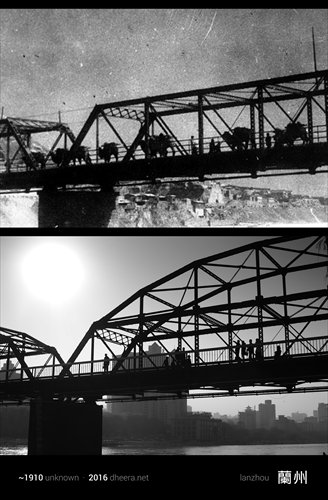
GT: What is the most striking difference you found while comparing the photos? Which city changed the most?
DV: It's interesting to see what humans are able to change and what humans are utterly incapable of changing. On one hand, a city may rise out of nowhere in just a matter of a decade or two, showing sheer scale of China's economic rise and rapid urbanization. At the same time, the profile of the mountains and rivers never budge, a constant reminder that we are still powerless compared to Mother Nature.
Ironically, the cities that changed the most aren't yet featured here. For example, I really, really wanted to include Shenzhen because it is a city that has suddenly come up in less than 30 years. I saw some shocking photos of the area 30 years ago when it was just a bunch of farmland and a small village. The changes were so drastic that I could not even figure out exactly where the photo was taken from. I'll have to do some more research and add to the album later!
GT: What are your future plans about this project?
DV: I plan to add to this over time, since I frequently travel to China. In particular I also want to include more northern cities, which were too smoggy in winter to take photos, but I may be able to do better in summer or fall.
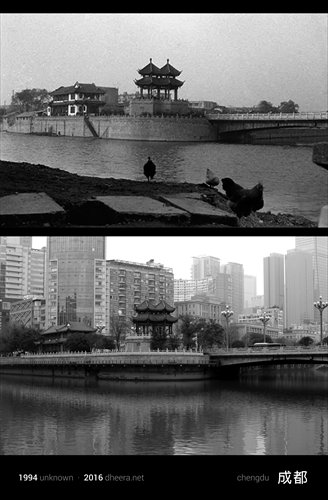
Chengdu, capital of Sichuan Province Photos: courtesy of Dheera Venkatraman
Newspaper headline: Not your typical time-lapse photography